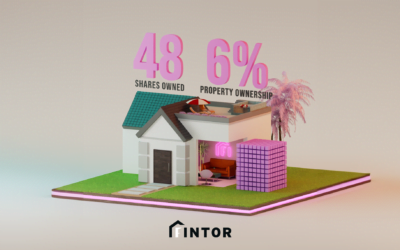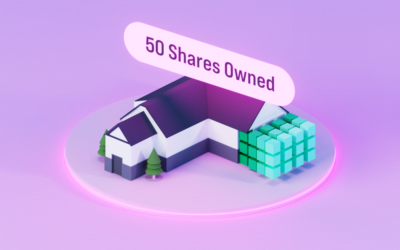Learn strategies to diversify your portfolio and add real estate investments to the mix. Real estate investments hedge against inflation during a recession—real estate investing has never been more accessible.
2023, and the world is buzzing with the news of a global recession. We’ve all read the headlines, seen the announcements of tech layoffs, and heard the experts’ warnings.
With all of this uncertainty, you may be wondering how you should proceed. Should you continue investing, or should you hide our money under the mattress?
Thankfully, there are many strategies you can use to limit your risk of losing big. In this article, we’ll focus on two main strategies:
1. Diversifying your Portfolio
2. Investing in Real Estate
To understand how to diversify your portfolio, you first must understand the different types of diversification and the types of asset classes you may encounter along the way.
Let’s get into it!
Strategies for Diversifying Your Portfolio
Diversifying your portfolio means to mix up your investments, thus limiting your exposure to a single risk. To put it simply, you don’t want to put all of your eggs into one basket. There are two ways you can diversify your portfolio. You can diversify beyond an asset class and within an asset class.
Asset classes are specific types of investments. For example, stocks and real estate are two different types of asset classes.
Diversification Beyond an Asset Class
A diversified portfolio beyond asset class is when you’ve purchased different types of assets.
Here are a few examples of asset classes:
Stocks – portions of a public company, mutual funds, ETFs
Bonds – investment securities which pay interest on money lent to companies or government entities
Cash Equivalents – art, antiques, collectors items, cars, Birkin bags
Real Estate – rental homes, commercial buildings, land
Commodities – natural resources, food, oil, gas
Alternative Investments – pre-IPO companies, crypto, precious gems, gold
DiversificationWithinan Asset Class
Stocks
It’s not recommended to have a portfolio that is 100% stocks if your risk tolerance is low. To reduce your risk of loss, you’ll want to ensure it’s a diversified portfolio.
For example, you can diversify across industries. Apple, Pfizer, and Delta Airlines stock are all the same asset class, but are diversified across different industries—namely tech, pharmaceutical, and airline industries.
If tech companies go bust, you still have two industries in which you’re invested.
In addition to industry diversification, you can diversify within an asset class through:
● Global diversification – buying stocks across many different stock exchanges globally
● Size diversification – buying stocks across many different size market caps
● Active vs. Passive diversification – buying stocks that are actively managed by a financial manager or passively managed (ETFs and index funds)
Bonds
Bonds are lower risk than stocks, and are a less volatile asset class in general. These are great additions to your portfolio if you have a low risk tolerance and/or a shorter time horizon.
You can diversify your bond portfolio in a number of ways:
● Issuer diversification – buying bonds from different issuers (municipal, US Treasury, corporate bonds, etc)
● Maturity diversification – buying bonds that should be held short term, intermediate term, or long term
● Quality of Credit diversification – buying bonds that have more credit risk than others or vice versa
To recap, you’ll want to diversify beyond asset class AND within asset class to reduce your risk of loss while increasing your rate of returns.
There is no fool-proof or sure-fire way to protect every investment you make. Investing is a game of managing risk and understanding market trends.
Thankfully, there is one asset class that can actually hedge against inflation.
Two words: real estate.
Investing in Real Estate in 2023
When we talk about real estate investments, we are talking about buying a property to then rent to another family or business. This could be a rental home, a vacation home, an office building, a warehouse space, or really any physical space that has a high demand of renters.
When you buy a property and rent it out, you’ll get monthly income while the property appreciates in value. When you sell it down the line, the price of the property will keep up with, and will usually surpass, the rate of inflation.
This type of real estate investment can hedge against inflation and proves to be a great way to diversify your portfolio. Conversely, when you buy your own personal home, you won’t have any profits going into your wallet until you sell.
People around the world are becoming extremely wealthy through real estate investment. So why are only approximately 63% of Americans invested in real estate and only 35% invested in rental properties?
Maybe you’ve seen this video of a millennial explaining the difference between buying a home in the 1980s versus 2023. It’s funny because it’s true. How are we supposed to get into the real estate investment game? In this economy?!
Now for the Good News
This is 2023, and we have new ways to invest in real estate.
Today you can purchase small portions of a single property and benefit from the monthly rental income. The best part? You can invest what you have. Only have $500 dollars? That’s all it takes these days to become a real estate investor.
With Fintor, you can dip your toes into the world of real estate investing and begin to grow your understanding of this asset class. With a diverse portfolio, you are more likely to make it out of this impending recession intact, if not better off.
Conclusion
Now that we have outlined a couple of ways to kickstart your portfolio diversification journey, let’s talk about the big picture. In addition to a diversified portfolio and real estate investments, you need to grow your financial literacy library to brave future market crashes.
Most importantly, investors must tame their fear if they want to make good decisions not based on emotion.
Robert Kiyosaki, the author of the #1 personal finance book, “Rich Dad, Poor Dad”, says, “The single most powerful asset we all have is our mind. If it is trained well, it can create enormous wealth.”
At Fintor, we provide a platform for users to learn about real estate investing as well as gain general knowledge on investing.
Ready to diversify your portfolio with real estate? Try out Fintor today!



